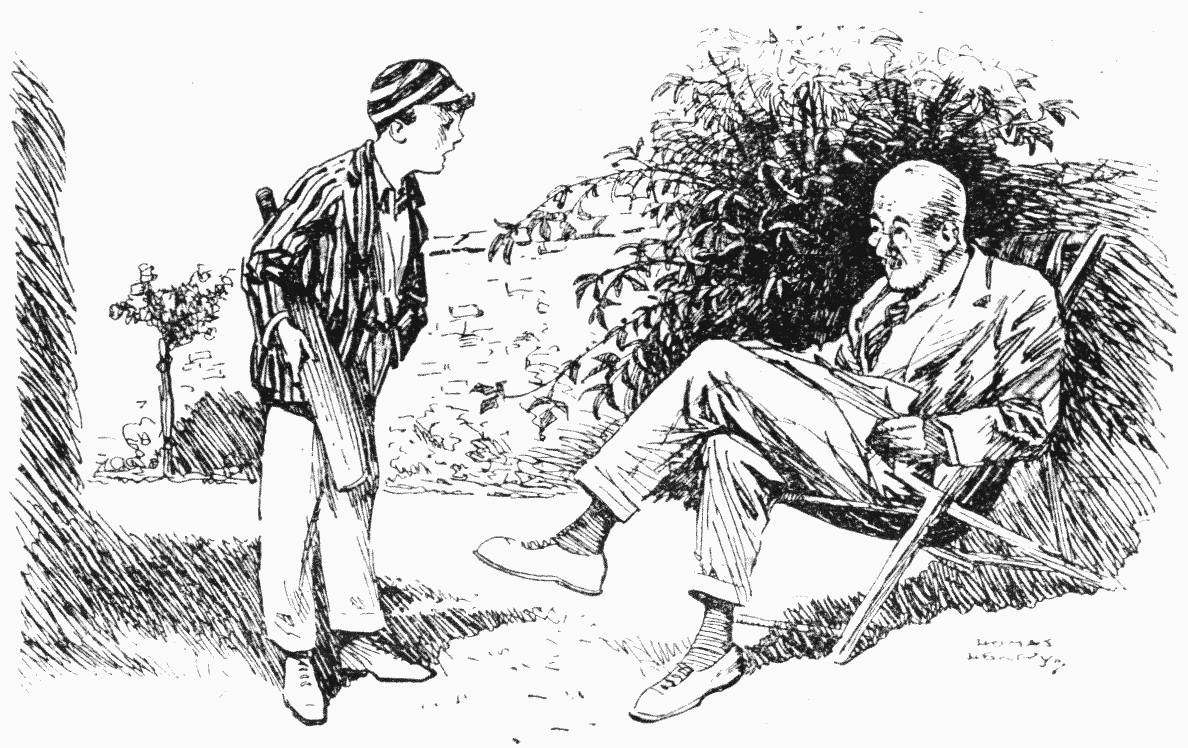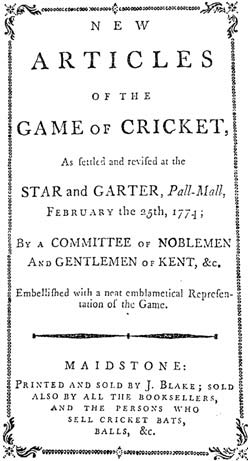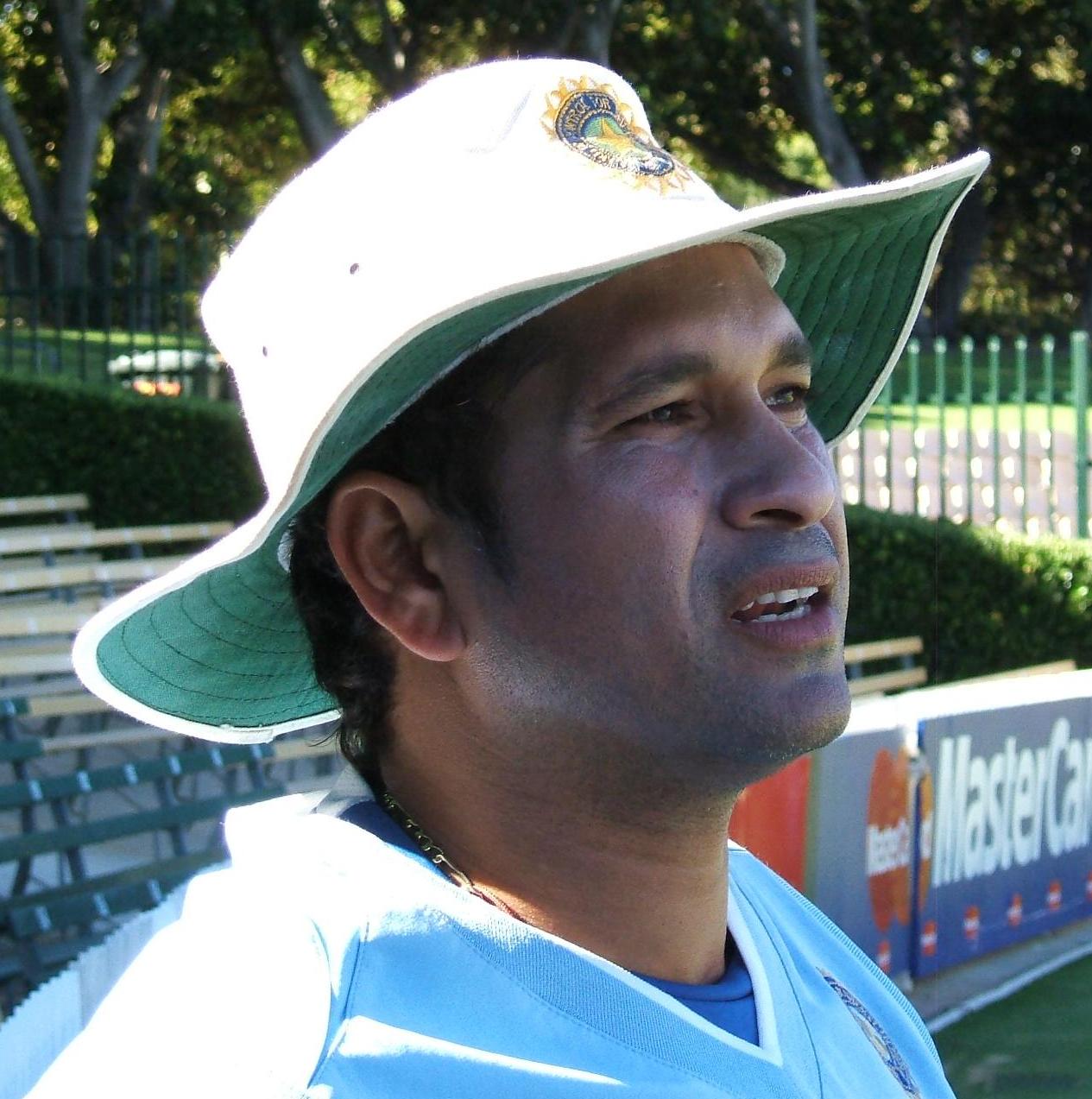|
Wickets
In the sport of cricket, the term wicket has several meanings: * It is either of the two sets of three stumps and two bails at each end of the pitch. The fielding team's players can hit the wicket with the ball in a number of ways to get a batter out. ** The wicket is guarded by a batter who, with their bat (and sometimes with their pads, but see the laws on LBW, leg before wicket), attempts to prevent the ball from hitting the wicket (if it does, he may be bowled out) and to score runs where possible. * Through metonymic usage, the dismissal of a batter is known as the ''taking of a wicket'', * The cricket pitch itself is sometimes referred to as ''the wicket''. History The origin of the word is from wicket gate, a small gate. Originally, cricket wickets had only two stumps and one bail and looked like a gate, much like the wicket used in the North American game of wicket. The third (middle) stump was introduced in 1775, after Lumpy Stevens bowled three success ... [...More Info...] [...Related Items...] OR: [Wikipedia] [Google] [Baidu] |
Bowled Out
This is a general glossary of the terminology used in the sport of cricket. Where words in a sentence are also defined elsewhere in this article, they appear in italics. Certain aspects of cricket terminology are explained in more detail in cricket statistics and the naming of fielding positions is explained at fielding (cricket). Cricket is known for its rich terminology.''Glossary of cricket terms''. England Cricket Board. Retrieved 13 May 2008."Cricket Academy – Glossary". |
Leg Before Wicket
Leg before wicket (lbw) is one of the ways in which a Batting (cricket), batter can be dismissal (cricket), dismissed in the sport of cricket. Following an Appeal (cricket), appeal by the Fielding (cricket), fielding side, the umpire (cricket), umpire may rule a batter out lbw if the cricket ball, ball would have struck the wicket but was instead intercepted by any part of the batsman's body (except the hand(s) holding the cricket bat, bat). The umpire's decision will depend on a number of criteria, including where the ball pitched, whether the ball hit in line with the wickets, the ball's expected future trajectory after hitting the batsman, and whether the batsman was attempting to hit the ball. Leg before wicket first appeared in the laws of cricket in 1774, as batsmen began to use their Pads#Batting, pads to prevent the ball from hitting their wicket. Over several years, refinements were made to clarify where the ball should pitch and to remove the element of interpreting th ... [...More Info...] [...Related Items...] OR: [Wikipedia] [Google] [Baidu] |
Cricket Stumps En
Cricket is a Bat-and-ball games, bat-and-ball game played between two Sports team, teams of eleven players on a cricket field, field, at the centre of which is a cricket pitch, pitch with a wicket at each end, each comprising two Bail (cricket), bails (small sticks) balanced on three stump (cricket), stumps. Two players from the Batting (cricket), batting team, the striker and nonstriker, stand in front of either wicket holding Cricket bat, bats, while one player from the Fielding (cricket), fielding team, the bowler, Bowling (cricket), bowls the Cricket ball, ball toward the striker's wicket from the opposite end of the pitch. The striker's goal is to hit the bowled ball with the bat and then switch places with the nonstriker, with the batting team scoring one Run (cricket), run for each of these swaps. Runs are also scored when the ball reaches the Boundary (cricket), boundary of the field or when the ball is bowled Illegal delivery (cricket), illegally. The fielding tea ... [...More Info...] [...Related Items...] OR: [Wikipedia] [Google] [Baidu] |
Wicket
In the sport of cricket, the term wicket has several meanings: * It is either of the two sets of three Stump (cricket), stumps and two Bail (cricket), bails at each end of the Cricket pitch, pitch. The Fielding (cricket), fielding team's players can hit the wicket with the ball in a number of ways to get a batter out (cricket), out. ** The wicket is guarded by a Batsman (cricket), batter who, with their cricket bat, bat (and sometimes with their pads, but see the laws on Leg before wicket, LBW, leg before wicket), attempts to prevent the Cricket ball, ball from hitting the wicket (if it does, he may be bowled out) and to Run (cricket), score runs where possible. * Through metonymic usage, the Dismissal (cricket), dismissal of a batter is known as the ''taking of a wicket'', * The cricket pitch itself is sometimes referred to as ''the wicket''. History The origin of the word is from wicket gate, a small gate. Originally, cricket wickets had only two stumps and one bail and lo ... [...More Info...] [...Related Items...] OR: [Wikipedia] [Google] [Baidu] |
Laws Of Cricket
The ''Laws of Cricket'' is a code that specifies the rules of the game of cricket worldwide. The earliest known code was drafted in 1744. Since 1788, the code has been owned and maintained by the private Marylebone Cricket Club (MCC) in Lord's Cricket Ground, London. There are currently 42 Laws (always written with a capital "L"), which describe all aspects of how the game is to be played. MCC has re-coded the Laws six times, each with interim revisions that produce more than one edition. The most recent code, the seventh, was released in October 2017; its 3rd edition came into force on 1 October 2022. Formerly cricket's official governing body, the MCC has handed that role to the International Cricket Council (ICC). But MCC retains copyright of the Laws and remains the only body that may change them, although usually this is only done after close consultation with the ICC and other interested parties such as the Association of Cricket Umpires and Scorers. Cricket is one of th ... [...More Info...] [...Related Items...] OR: [Wikipedia] [Google] [Baidu] |
Batsman (cricket)
In cricket, batting is the act or skill of hitting the ball with a bat to score runs and prevent the loss of one's wicket. Any player who is currently batting is, since September 2021, officially referred to as a batter regardless of whether batting is their particular area of expertise. Historically, ''batsman'' and ''batswoman'' were used, and these terms remain in widespread use. Batters have to adapt to various conditions when playing on different cricket pitches, especially in different countries; therefore, as well as having outstanding physical batting skills, top-level batters will have quick reflexes, excellent decision-making skills, and be good strategists. During an innings two members of the batting side are on the pitch at any time: the one facing the current delivery from the bowler is called the striker, while the other is the non-striker. When a batter is out, they are replaced by a teammate. This continues until the end of the innings, which in most cases ... [...More Info...] [...Related Items...] OR: [Wikipedia] [Google] [Baidu] |
Bowler (cricket)
Bowling, in cricket, is the action of throwing, propelling the cricket ball, ball toward the wicket defended by a batter. A player skilled at bowling is called a ''bowler''; a bowler who is also a competent :Batting (cricket), batter is known as an all-rounder. Bowling the ball is distinguished from throwing (cricket), ''throwing'' the ball by a strictly specified biomechanical definition, which restricts the angle of extension of the elbow. A single act of bowling the ball towards the batter is called a ''ball'' or a ''delivery (cricket), delivery''. Bowlers bowl deliveries in sets of six, called an ''over (cricket), over''. Once a bowler has bowled an over, a teammate will bowl an over from the other end of the pitch. The Laws of Cricket govern how a ball must be bowled. If a ball is bowled illegally, an umpire (cricket), umpire will rule it a ''no-ball''. If a ball is bowled too wide of the striker for the batter to be able to play at it with a proper cricket shot, the bowler' ... [...More Info...] [...Related Items...] OR: [Wikipedia] [Google] [Baidu] |
John Small (cricketer)
John Small (19 April 1737 – 31 December 1826) was an English professional cricketer who played during the 18th century and had one of the longest careers on record. Born at Empshott, Hampshire, he is generally regarded as the greatest batsman of the 18th century and acknowledged as having been the first to master the use of the modern straight bat which was introduced in the 1760s. He probably scored the earliest known century in important cricket. The strength of the Hambledon/Hampshire team during Small's prime years can be seen in the team being rated the (unofficial) Champion County in 10 seasons: 1766–1771, 1776–1777, 1779 and 1783. He died at Petersfield, where he was in residence for most of his life and where he established businesses. Small was a very influential player who was involved in the creation of two significant permanent additions to the '' Laws of Cricket'': the maximum width of the bat and the introduction of the middle stump (out of the three st ... [...More Info...] [...Related Items...] OR: [Wikipedia] [Google] [Baidu] |
Run Out
Run out is a method of dismissal in cricket, in which the fielding team put down the wicket of a batter who is outside their ground, usually because they are trying to score a run. Run out is governed by Law 38 of the laws of cricket. If the batter is judged run out, the run does not count and the bowler does not get credit for the wicket. A run out can also be effected when the batters are not attempting a run if one of them leaves the crease when the ball is not dead. Some such dismissals cause controversy because they challenge long-established — but not universal — conventions about the spirit of the game. Definition A batter is run out if, at any time while the ball is in play, no part of their bat or person is grounded behind the popping crease and their wicket is fairly broken by the action of a fielder. The batter whose ground is at the end where the wicket is broken is out. A batter can be run out even when not attempting a run if they are out of ... [...More Info...] [...Related Items...] OR: [Wikipedia] [Google] [Baidu] |
Cricket Pitch
A cricket pitch is the rectangular central strip of a cricket field between the two wickets, where most of the action takes place. It is long (1 Chain (unit), chain) and wide. The surface is flat and is normally covered with extremely short grass, but can be completely dry or dusty soil with barely any grass or, in some circumstances (that are rarely seen in high level cricket), made from an artificial material. Over the course of a cricket match, the pitch is not repaired or altered other than in special circumstances - meaning that it will change condition. Any grass on the pitch at the start of the game, for example, may disappear due to wear. As almost all Delivery (cricket), deliveries bowled will bounce off the pitch towards the Batting (cricket), batter, the state and type of a cricket pitch can significantly affect the outcome of a match. For example, a dusty, very dry, pitch will favour spin bowling because the ball will grip more on a dusty pitch - giving the te ... [...More Info...] [...Related Items...] OR: [Wikipedia] [Google] [Baidu] |








